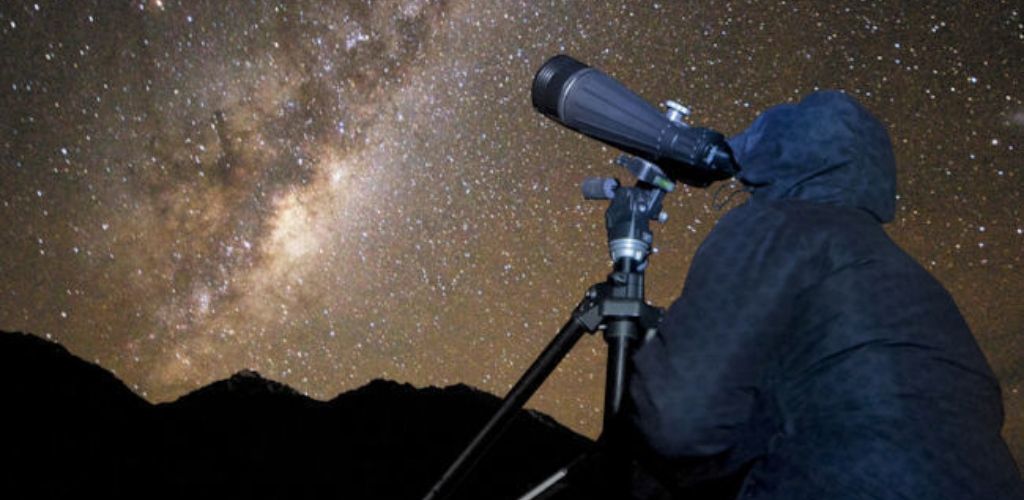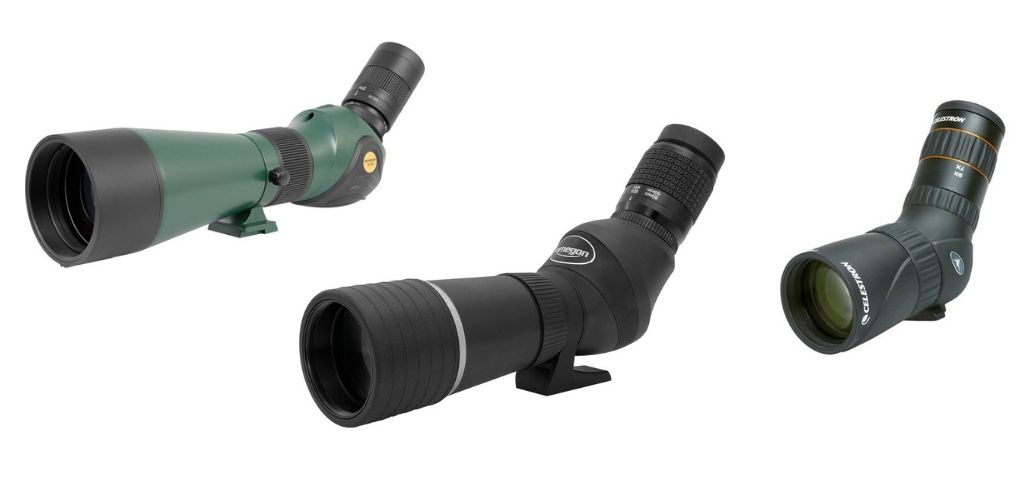
Often overlooked, spotting scopes are a cheap alternative to the telescope. Favorite instrument for naturalists, spotting scopes are very useful for watching a herd of antelopes in Africa or a bird flying from tree to tree. As night falls, as wildlife observers return home, astronomers prepare to go out to observe planets and stars that dot the night sky. Some of them prefer to leave their heavy telescopes at home and take only a spotting scope to observe the night sky.
Although this does not quite match the image of the astronomer leaning over the eyepiece of a Dobsonian telescope or a refracting telescope, this is not surprising. Like nature lovers, astronomers like to use spotting scopes, especially for short, easy astronomical observations.

They will not allow you to get views of deep sky objects, such as galaxies or nebulae, with the same precision as a telescope. However, you will be surprised at the quality of the images you will get from the brightest celestial objects in the night sky, like the Moon, nearby planets and open clusters.
About magnification, spotting scopes are provided with zooms that can reach 60x magnification and often more. These can be removed to put standard eyepieces used on conventional telescopes. For observations of the night sky, a magnification of at least 60x is a must, but for this you have to consider the aperture of your spotting scope. This is the diameter of the lens of your spotting scope : the bigger it is, the more it lets in the light.
The beauty of the night sky makes many observers want to photograph it. Fortunately, digital cameras can be mounted on most spotting scopes with a special adapter. However, when digiscoping on a spotting scope, obtaining a clear picture can be problematic if the stability of your spotting scope is not OK.
Since low brightness requires a slow shutter speed, you should avoid moving or vibrating the camera in order to get a sharp picture. It is therefore essential to have a solid and adapted mount. In addition, the small size of the camera screen and the low brightness of the celestial objects in the night sky make it a bit difficult to focus.
In short, spotting scopes are increasingly used by astronomers. It owes its success to its price more accessible than the price of a standard telescope, the quality of its images and its ease of use.
Due to their smaller size, spotting scopes are easier to mount than telescopes.
Advantages of spotting scopes for astronomy

Capture the light
Due to their large lens, spotting scopes can capture a lot of light. This is particularly useful in low light conditions.
Right or angled aiming ?
Spotting scopes with a straight aim are particularly suitable for terrestrial observation. For astronomical observation, prefer a so-called angled spotting scopes (with a 45° or 90° eyepiece), it will facilitate the observation of objects located vertically.
Waterproof
Unlike telescopes, spotting scopes are often used in the rain by animal watchers and are designed to withstand fog and water.
Digiscoping
It is possible to photograph the night sky by putting a digital camera on your spotting scope, although you have to take several pictures before getting a good picture.
Bright objects
To observe the brightest objects in the night sky, such as the Moon, planets, and open clusters, you’ll need a magnification of at least 60x.
Short cooling time
Many astronomers complain about the time it takes for their telescope to adapt to the ambient temperature. In contrast, the spotting scopes, more compact and lighter, have a shorter cooling time and can be used quickly.
Tripod
One of the advantages of spotting scopes is that they can be used with or without a tripod. However, for astronomical observation, it is strongly recommended to mount the spotting scope on a stable tripod.
How To Choose A Spotting Scope
- The bigger the lens, the more light it lets in the camera. If you have a limited budget, then you better buy a high quality telescope with a smaller lens.
- Think about the use you want to make of your spotting scope. If you only want to observe deep-sky objects, then you should opt for a conventional telescope.
- Always keep in mind the weight of your spotting scope. If you are looking for an easy-to-carry instrument, choose it lighter.
- Lens must have been treated to reduce glare and prevent light loss. As a result, the spotting scope will make images clearer and sharper.
- If you wear glasses, you need to consider the eye relief which is the distance between the eye pupil and the last glass surface.
